5 Spooky Fall Favorites!
When visiting the Museum, make sure you check out these 5 spooky fall favorites in our permanent galleries!
1. Late Autumn in the Woods, n.d. by Alfred S. Wall
We love all of the fall landscapes in the Southwestern PA Gallery, and they are all definitely worth viewing. Since we had to pick only one for this Spooky, Autumn Artworks blog post, we chose Alfred S. Wall’s Late Autumn in the Woods.
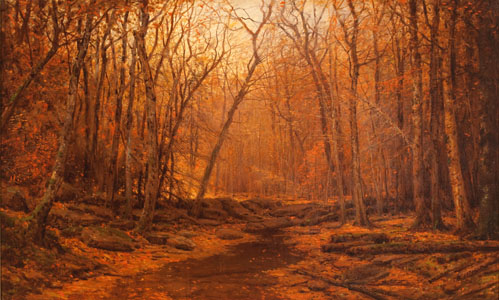
Using skillful brushwork, Wall recreates a scene of late autumn, deep in the forest possibly during sunset, with trees almost barren of foliage, a ground carpeted with red and orange leaves, and waning light. Placing a stream in the middle of the canvas, Wall leads the viewer’s gaze into the composition. Thickets of dark brown trees in the forefront and highlighted light brown trees in the background creates depth, giving the viewer the impression that the woods are endless.
Although Wall beautifully renders a scene of Late Autumn in the Woods, the painting with its subdued color palette, thickets of seemingly endless trees, and absence of people or animals, may also evoke the feeling of getting lost in the woods as night falls.
This work is on view in the Southwestern Pennsylvania Gallery.
2. Lady in Pink, c. 1892 by William Merritt Chase
Chase’s Lady in Pink makes our spooky fall favorites list because of a few comments that school children have made while on a tour!
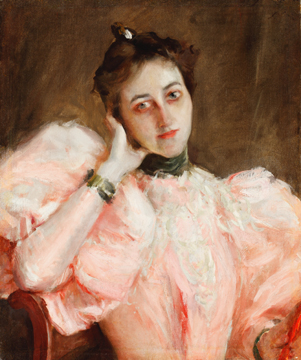
Chase’s brushwork is evident in the portrait of The Lady in Pink with the voluminous pale pink fabric and delicate ivory lacework as is his skill in replicating the sitter’s pensive expression (1).
But, who is the Lady in Pink? Art historian Ron Pisano suspects it may be Virginia Gerson, his wife’s sister, due the similarity in the shape of the eyebrows and nose to other known portraits of Virginia and the fact that the painting remained in the family’s possession until 1980 (2).
School children on tours have a slightly different guess as to who or what the Lady in Pink is. Due to the portrait’s exceedingly pale face and arms as well as the dark reddish circles under her eyes, it’s somewhat understandable that school children have wondered if the Lady in Pink may have been a vampire or an undead zombie.
This work is on view in the 19th Century Gallery.
3. Tall Case Clock, c.1805, by Henry Wise.
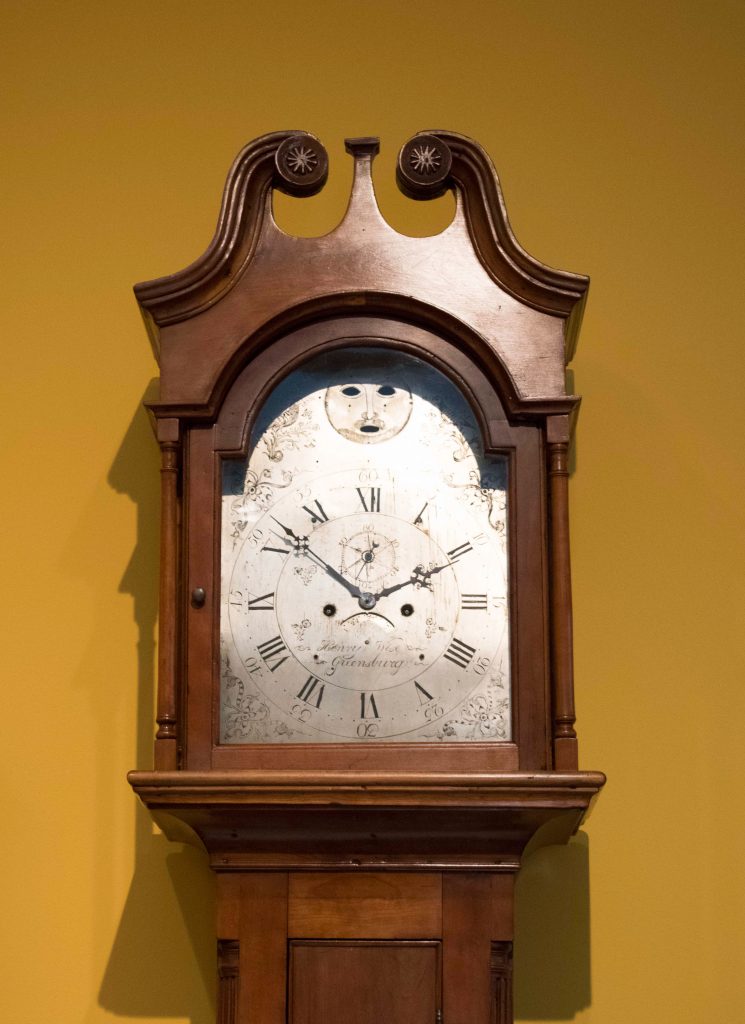
Our spooky fall favorites list wouldn’t be complete without Wise’s Tall Case Clock due to the somewhat creepy, yet rare engraved face on the dial arch.
Interestingly, the engraved face was a relatively recent discovery. At some time before the Tall Case Clock came to the Museum’s collection, a round silvered disk, engraved with a sundial, urn and the saying, “Tie passeth away/like a shadow” had been attached to the front of the dial arch. This round silver disk, lacking refinement and flourishes, didn’t seem to be by the same individual who engraved the dial. Upon examination, three piercings were observed in the back of the dial arch. When the disk was removed, the engraved face emerged. A face in the dial arch with rocking eyes, which our clock apparently had at one time is exceedingly rare, but these features could quite easily frighten small children or even adults (3).
A relative of the donor shared a story he had heard of young girls being frightened by a face on the dial, which could explain why the disk was added to cover the engraved face (4).
On view in the 19th Century Gallery.
4. Richard Wilt’s Imbibers (The Coke Drinkers) c. 1947
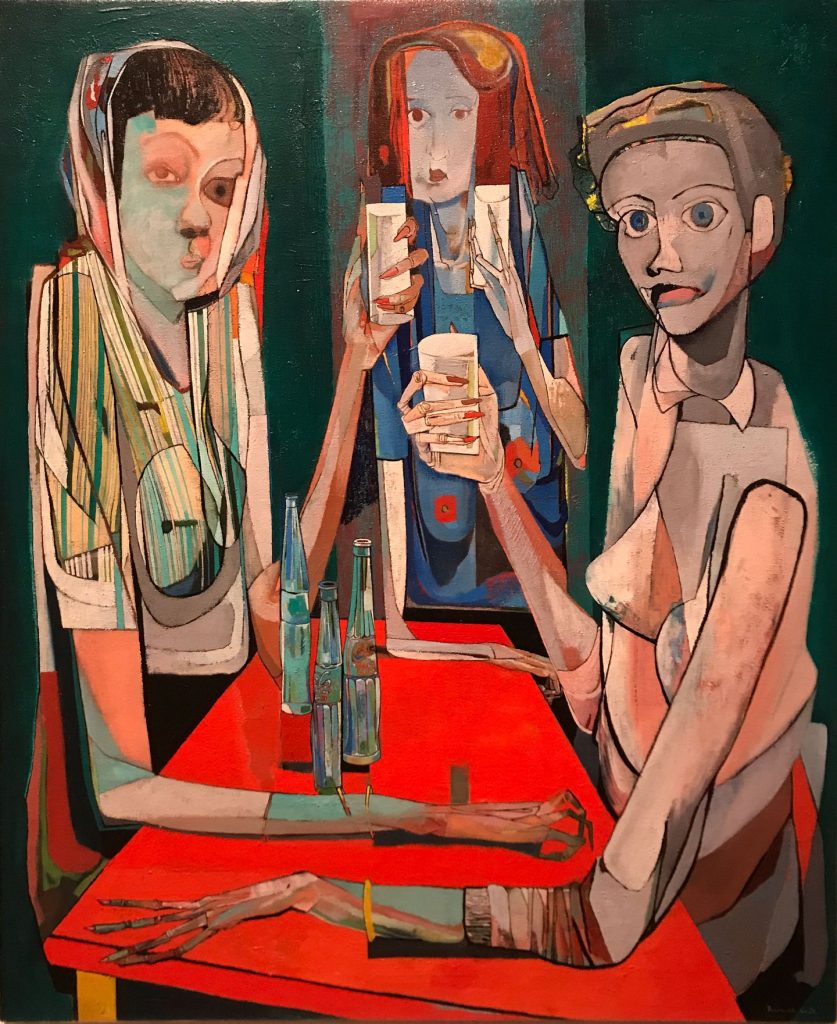
Richard Wilt’s Imbibers (The Coke Drinkers) also makes the spooky fall favorites list!
Wilt paints the three drinkers with hard lines and geometric shapes, giving the drinkers a reassembled feel that’s a clear nod to cubism. With its vibrant colors and cubist elements, Wilt’s Imbibers is a favorite of visitors to the Museum.
According to our School Programs Manager, the cubist elements combined with the slightly abstract fragmented faces and long skeleton-like hands seems to slightly unnerve children who have mentioned that the artwork reminds them of zombies or animatroinc figures.
This piece is on view in the 20th Century Gallery.
5. Rip Van Winkle by George Frederick Bensell*
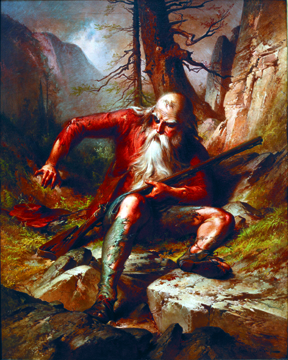
Rounding out our list of spooky fall favorites is George Frederick Bensell’s painting Rip Van Winkle. In this painting, Bensell expertly combines a detailed landscape with a narrative portrait, re-creating Washington Irving’s timeless folktale, Rip Van Winkle, that was published in 1819 (5).
The narrative painting captures Rip Van Winkle’s bewildered awakening after being asleep for 20 years. Bensell clearly depicts the shock on Van Winkles face with a forehead creased in consternation and concerned eyes, and realistically renders details of his appearance after 20 years asleep with a long white beard, balding head, ragged clothes, a rotted gun, and sharp fingernails (6).
If you aren’t familiar with Irving’s short story, Rip Van Winkle, click here to find out more about it!
Unfortunately, even though Rip Van Winkle is one of our favorites, it is undergoing conservation and is not currently on view.
On your next trip to the Museum, find these artworks and decide for yourself whether or not they are a little bit spooky!
Bibliography:
-
O’Toole, Judith H. “William Merritt Chase (1849-1916) Lady in Pink, c. 1892.” Picturing America: Signature Works from the Westmoreland Museum of American Art, by Barbara L. Jones, Judith H. O’Toole, and Harley N. Trice, Westmoreland Museum of American Art, 2010, p. 122.
-
Pisano, Ronald G., Carolyn Lane, and D. Frederick Baker, The Complete Catalogue of Known and Documented Work by William Merritt Chase (1849-1916), vol. 2, William Merritt Chase: Portraits in Oil, Yale University Press, 2006, OP.I84, p. 100.
-
Trice, Harley N. “Henry Wise (1763-1831; w. 1802-1814) Tall Case Clock, c. 1805.” Picturing America: Signature Works from the Westmoreland Museum of American Art, by Barbara L. Jones et al., Westmoreland Museum of American Art, 2010, p. 32.
-
Trice, Harley N. “Henry Wise (1763-1831; w. 1802-1814) Tall Case Clock, c. 1805.” Picturing America: Signature Works from the Westmoreland Museum of American Art, by Barbara L. Jones et al., Westmoreland Museum of American Art, 2010, p. 32.
-
Jones, Barbara L. “George Frederick Bensell (1837-1879), Rip Van Winkle, n.d..” Picturing America: Signature Works from the Westmoreland Museum of American Art, by Barbara L. Jones et al., Westmoreland Museum of American Art, 2010, p. 63.
-
Jones, Barbara L. “George Frederick Bensell (1837-1879), Rip Van Winkle, n.d..” Picturing America: Signature Works from the Westmoreland Museum of American Art, by Barbara L. Jones et al., Westmoreland Museum of American Art, 2010, p. 63.
